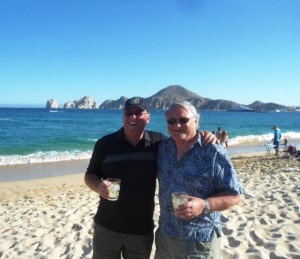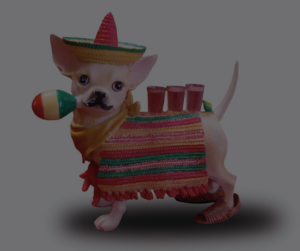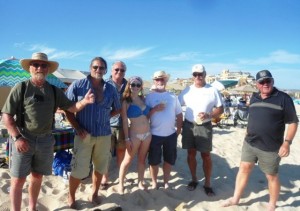
March 30, 2014 – Tour continues as we have now made the turn northward arriving yesterday in La Paz at our final destination, Campestra Maranatha (actually in El Centenario). Our drive from the parking lot behind the Los Cerritos Surf Colony (thinly disguised as an RV Park) was uneventful with our first stop in Todos Santos for a 3 hour walking tour of this magical Mexican town that includes the Hotel California made popular by the legendary band, The Eagles.
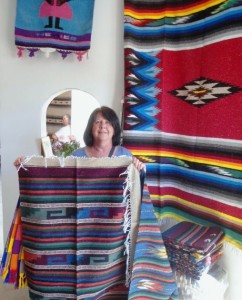
Some had lunch there, others at Georges Tacos, we ate at Gorditas, certainly no lack of places to have lunch in this community. We dropped in to see Shawna who operates Chocolates La Laguana, her homemade chocolates are to die for, wow! We also stopped by to see Jennifer & Daphne at the Alas y Olas Gallery, they really have high quality and unique goods well displayed in their store. Next we headed east on Hwy 19 and rejoined Hwy 1 to La Paz after a short fuel stop. One more stop at Walmart and we were ready to get settled at the campground and then a couple of impromptu Happy Hours broke out. Today we dropped by our favourite pottery shop Ibarra`s, folks really liked this stop, next we dropped the gang off at the Madero Mercado on Revolution de 1910 to start the sightseeing of the La Paz downtown.
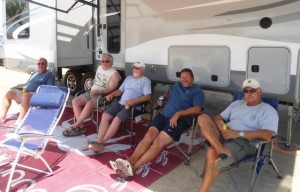
Our 3 days in Cabo were lots of fun and very busy. After the first day we were off at 9am precisely to Artesano`s, people were just amazed at the selection and reasonable prices. Shopping was brisk and the group was very efficient as we departed in less than an hour. Back to Villa Serena we picked up some more passengers, dropped off some goods then destination San Jose Del Cabo. On our arrival we headed to the bank, then some peeled off to the Art District, others to Baja Brewing and still others in search of lunch. After a couple of hours the gang was ready to return back to the RV Park. Later some joined us for dinner at the Vagabundos RV Park Restaurant, great food as always, Peter & Joe always do a fantastic job.
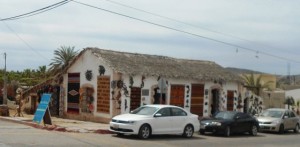
Day 3 in Cabo saw us head out to Playa Santa Maria for a swim and snorkel where the water was calm, sun hot with little or no wind, simply perfect. When we arrived it was very quiet with few on the beach, a couple of hours later it was busy with many tour boats in the harbour and many more occupying the sandy shores in this picturesque location off the beaten path. Next we headed back to camp, a quick lunch and some headed to downtown Cabo San Lucas. Later in the afternoon we set sail to Playa Medano for our hosted Happy Hour not before picking up those we dropped off in town. This beach event is always lots of fun and this was no exception, many of the younger crowd around enjoying themselves because of Spring Break, so a real diverse group of vendors plying their wares. Victor met us on the beach and sold a number of his lemon pots as well as salt & pepper shakers and I finally found my 2XL Pacifico Tank Top. The group did polish off all the Margaritas but failed to consume all the beer, they did give it a college try (no pun intended). All said lots of memories were made this day with our gang of Baja Amigos.
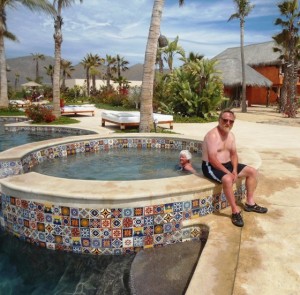
We had breakfast with Dom and Diane the next morning, they had arrived with their group the afternoon before. Then we departed for the Los Cerritos Surf Colony RV Park (really just a parking lot) but first we stopped at Efren`s Factory of Mexican Blankets. We had some items to pick up and most on tour made some purchases, luckily his Mom was nowhere to be seen, she is a real tough bargainer. Within a few minutes we were setting up at the Surf Colony and then many hit the pool and hot tub, these are perks at this location. Before you knew it we were heading off to La Pasadita for dinner, Jose`s was a hit, lots of food and an experience many will not soon forget.
Tonight we went to Los Magueyes Restaurant for dinner in La Paz. It was memorable, fun, tasty and great music, plus flaming flan. This morning at 10 we leave for the Malecon and a classic car show under sunny skies, what could be better eh?
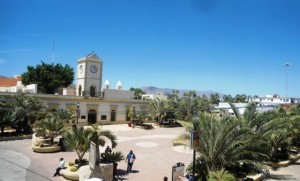
Did you know?
There are still a few places where blue whales gather year after year. Every winter, between 250 and 300 of them enter the Sea of Cortez to feed and nurse their young not far from Loreto, making this Mexican paradise one of the best spots on earth for blue whale encounters. Loreto’s backyard is the Sea of Cortez, which shelters a third of the world’s marine cetacean species. These highly productive waters, and their strikingly beautiful islands, are UNESCO World Heritage Sites. Out of the hundreds of thousands of blue whales that may have once swam the world’s oceans, only between 10,000 and 25,000 remain today. Blue whales have been found in every ocean of the world and they can swim individually or in small groups, pairs are very commonly seen. Approximately 2,000 blue whales live off the California Coast and migrate to Mexico, and Costa Rica.
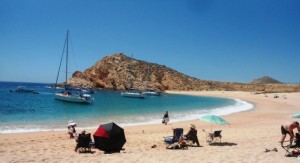
The blue whale was too swift and powerful for the 19th century whalers to hunt, but with the arrival of harpoon cannons, they became a much sought after species for their large amounts of blubber. The killing reached a peak in 1931 when 29,649 blue whales were taken. By 1966, blues were so scarce that the International Whaling Commission declared them protected throughout the world. Today, there are between 8,000-9,000 blue whales in the oceans, and they are considered an endangered species. However, we can see them in the summer and fall off the central California coast, feeding in such places as the Gulf of the Farallones and Cordell Bank National Marine Sanctuaries. The 2,800 blue whales that feed along the California coast make up the largest concentration of blue whales in the world.
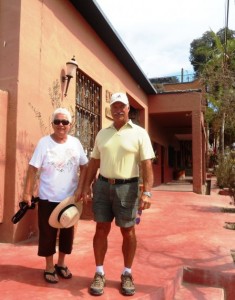
Blue whales grow to be about 80 feet (25 m) long on average, weighing about 120 tons (109 tonnes). The largest specimen found was a female 94 feet (29 m) long weighing more 174 tons (158 tonnes). The females are larger than males, as with all baleen whales. The largest of the blue whales (150 tons) has a heart that weighs about 1,000 pounds (450 kg) and has 14,000 pounds (6,400 kg) of blood circulating in its body. The heart is about the size of a Volkswagon bug car. A human could crawl through the aorta (a major blood vessel). Blue whales are an overall blue-gray color, mottled with light gray. Cold water diatoms adhere to their skin and sometimes give their bellies a yellowish tinge, giving the blue whale its nickname of “sulfur bottom.” Blue whales are long and streamlined. Their dorsal fins are extremely small, and their pectoral flippers are long and thin. Blue whales are rorqual whales, a family of baleen whales with pleated throat grooves that expand when the animal takes in water while feeding. In blue whales, 55-68 throat grooves extend from the throat to the navel. Blue whale baleen is black with over 800 plates.
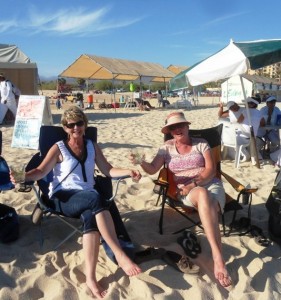
Females give birth to calves every two to three years. They remain pregnant for about one year before giving birth. When born, the blue whale calf is about 23 feet (7 m) long and weighs 5,000 to 6,000 pounds (2,700 kg). A nursing blue whale mother produces over 50 gallons (200 liters) of milk a day. The milk contains 35 to 50% milk fat and allows the calf to gain weight at a rate of up to 10 pounds an hour or over 250 pounds (44 kg) a day! At six months of age and an average length of over 52 feet (16 m), the calf is weaned. The blue whale reaches sexual maturity at around 10 years of age. The favorite food of these giants is krill, or shrimp-like euphausiids, that are up to three inches long. Blue whales must eat two to four tons of krill a day during the feeding season. They concentrate on feeding during the polar summers primarily around the Channel Islands, Monterey Bay, and the Farallon Islands/Cordell Bank. During the winter months, they migrate to the warmer waters in Mexico and Costa Rica.
